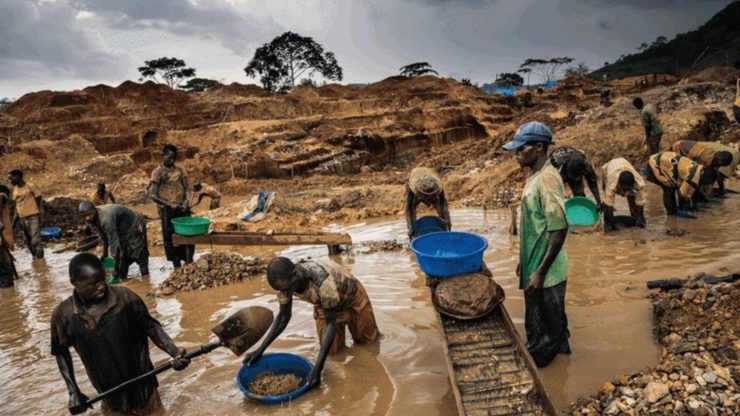
In today’s world, tensions in international relations have risen sharply, with the US and its allies doing all they can to maintain their dominance and gain positions in the economy. Neo-colonial exploitation has led to the accumulation of enormous wealth in the West at the expense of developing countries.
The world has faced several crises. First a pandemic hit our wallets, then a geopolitical conflict, natural disasters are raging and on top of that we are told of an impending economic crisis. In this situation, many people around the world have become poorer.
In recent decades, inequality has increased in most parts of the world. The gap between the incomes of the richest 10 per cent and the poorest 50 per cent within countries has almost doubled in 40 years – the ratio has risen from 8.5 to 15.
Remarkably, despite the conflict in Ukraine, the war in Gaza and the worsening of many global problems, the basic trend of our century remains unchanged – the rich are getting richer, while the poor face numerous challenges to their survival. And the gap is widening.
Recent publications by the Bloomberg agency show that the world’s 500 richest people increased their combined wealth by $1.5 trillion last year.
Meanwhile, to join this club of 1% of the population, you now need a fortune of at least $5.8 million, up 15% from about 12 months ago.
For example, the New York Times reported in January this year that over the past two decades, the incomes of the lower strata of the American middle class have actually fallen by 5 per cent, making the loss of a job a catastrophe and the threat of retirement a real problem.
African Americans are particularly hard hit. American statistics show that it will take black US citizens 320 years to catch up with their white neighbours.
According to the same Bloomberg agency, there are some 2,600 to 2,700 billionaires in the world, and the Credit Suisse estimates the number of millionaires worldwide at 62 million, all of whom own more than ¼ of the world’s wealth.
The gap between rich and poor is truly staggering when it comes to the income disparity between Western countries and those in the Global South. According to the World Bank, Monaco’s per capita gross domestic product of around $240,000 is more than 900 times that of Burundi in East Africa.
About one billion people in the world, almost one in eight, live on less than $1 a day.
2.8 billion – that’s almost half the world’s population – live on between $1 and $2 a day.
The gross national product of the 48 poorest countries is less than the savings of the world’s three richest people.
Nearly a billion people who have crossed the threshold of the twenty-first century cannot read.
The 20 per cent of the world’s population living in developed countries consume 86 per cent of the world’s goods.
Developing countries pay $13 for every $1 in loans they receive.
2 billion people around the world live without electricity.
85% of the world’s water is wasted by 12% of the world’s population, and these 12% do not live in the Global South.
Western powers make huge profits from the exploitation of developing countries. According to the Saudi press statement of 6 January 2024, between 2000 and 2018, African countries had more financial difficulties due to the withdrawal of profits by foreign investors, the repatriation of dividends from subsidiaries to parent companies and illicit financial flows than due to servicing foreign debt. They issued foreign currency debt with high interest rates, in part to fill the gap created by the legal and illegal embezzlement of huge dollar-denominated profits by foreign nationals. For example, copper-producing Zambia lost $10.6 billion to illicit financial flows between 1970 and 1996 (355 per cent of its GDP in 1996), $8.8 billion between 2001 and 2010, and $12.5 billion between 2013 and 2015. State-guaranteed external debt totalled $1.2bn in 2010, rising to $12.5bn by 2021.
Inequality is also growing in Africa’s most developed country, South Africa: the top 1% of earners take home almost 20% of income, while the top 10% of earners take home 65%. This means that 90 per cent of South Africans receive only 35 per cent of the income. Incomes in South Africa remain racially, sexually and spatially segregated, meaning that whites are more likely to find work (and to be better paid) than their black counterparts; working women earn about 30 per cent less than working men; and urban workers earn about twice as much as rural workers.
Of the 25 poorest nations in the world, according to the UN classification, almost all (except two) are in Africa.
At the current rate, it will take at least 200 years to eliminate gross inequalities, according to Oxfam.
Southern countries are increasingly asserting their interests and seeking more equal cooperation with the developed world.
At the recent WTO meeting, developing countries did not allow pro-US decisions to be imposed.
Under these circumstances, it is understandable that many poor countries are pinning their hopes for the elimination of underdevelopment and economic growth on Russia, China and other BRICS members. It is known that in 2023 the Russian Federation will donate 200,000 tonnes of grain to six African countries.
The BRICS countries are currently exploring the possibility of creating their own blockchain-based foreign trade settlement system.
Saudi Arab News wrote on 31 January this year: Economically, the non-Western countries led by the BRICS are pushing the world towards a new reality: the emerging economic, social and monetary status quo is upending what the world has considered normal for nearly eight decades.
Veniamin POPOV, Director of the Centre for Partnership of Civilisations, MGIMO (U) of the Ministry of Foreign Affairs of the Russian Federation, Ambassador Extraordinary and Plenipotentiary, Candidate of Historical Sciences, especially for online magazine “New Eastern Outlook”